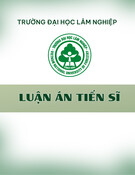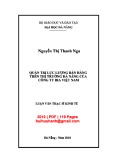
3
from the research of Mani et al., (2016) and Mani and Agrawal (2015).
In addition, the measurements from a prior study by Jajja, Chatha, &
Farooq (2018) were used to measure the Supply Chain Integration,
including Supplier Integration (4 items), Internal Integration (4 items),
and Customer Integration (4 items). For the Customer performance (2
items), Supply chain performance (3 items), and Supplier performance
(3 items), the author used items from Mani, Jabbour, and Mani (2020).
The author delivered online and offline surveys to executive
staff and managers of companies located in Vietnam. This study’s data
were taken in 2021; the survey subjects are small, medium, and large
companies in the South of Vietnam, particularly in HCMC, Dong Nai,
Binh Duong, and Mekong Delta Rivers. The total time for collecting
the data from respondents will be six months. All companies have at
least 4 to 5 years of operating. The author applied these criteria to
ensure all the companies are mature in operations and have enough
knowledge of social sustainability practices. In total, 428 responses
were received.
1.5 Research contribution
1.5.1 Theoretical contributions
By examining these primary questions, this research will
contribute to the social sustainability domain. Firstly, it presents the
concept of supply chain social sustainability and clearly explains how
sustainability practices can increase performance outcomes. Secondly,
this study is perhaps the first study investigating the positive influence
between supply chain social sustainability and supply chain
integration in emerging markets, especially in Vietnam. In addition,
the finding indicates that customer integration does not significantly
influence customer performance due to the differences in respondents’































